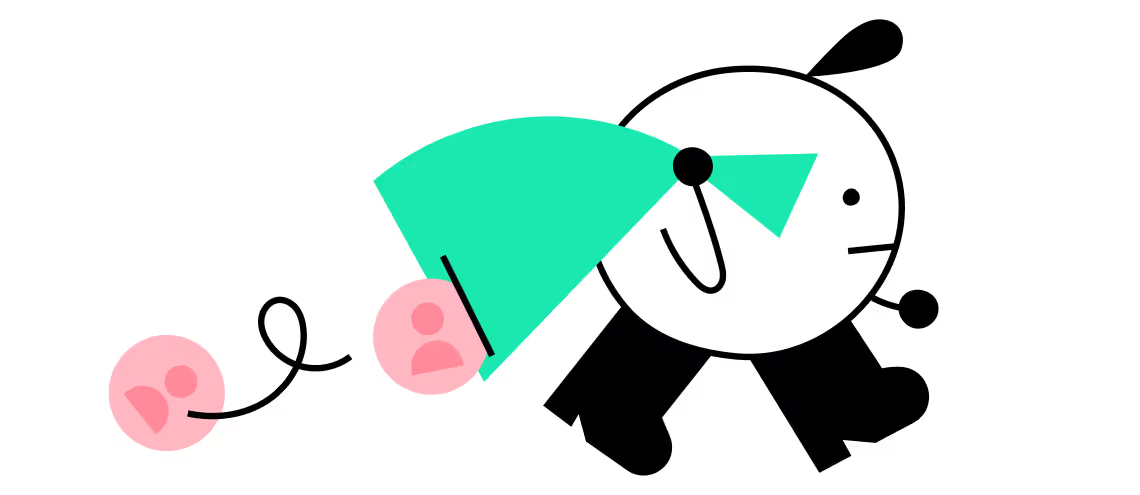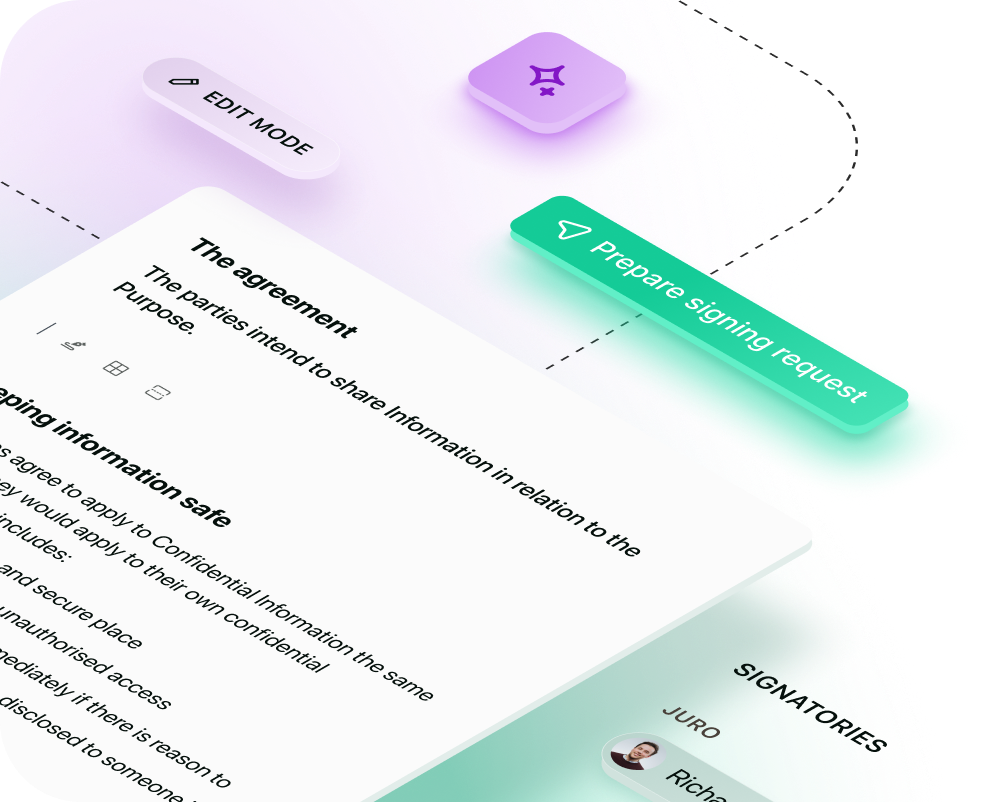Solutions
Customer Support
Resources
Download this customizable graphic design contract template to outline project scope, deadlines, and payment terms for upcoming initiatives.




Whether it’s creating a brand identity, advertising or online content, design projects need clear agreements to manage expectations and deliverables effectively. This article explores the intricacies of graphic design contracts and looks at how Juro’s AI-driven platform can transform their management.
A graphic design contract is a formal agreement that details the terms of engagement between a client and a graphic designer or design agency. It specifies the scope of work, including the specific design tasks to be completed, project timelines, payment terms and ownership of the final designs. It also outlines confidentiality agreements, revision policies, and the process for handling any disputes.
By clearly defining these elements, a graphic design contract ensures that both the client and the designer understand their responsibilities and expectations, protecting their interests and facilitating a successful project.
The purpose of a graphic design contract extends beyond simply outlining project specifics – it provides a comprehensive framework that guides the entire project lifecycle. A graphic design contract aims to:
Overall, a graphic design contract aims to prevent misunderstandings, ensure smooth project execution, and build a professional, trust-based relationship between the client and the designer.

The responsibility for managing graphic design contracts depends on the size and structure of the organization. Freelancers and designers in small studios usually handle everything themselves – including drafting, negotiating with clients and storing contracts. In a small agency, contracting may be managed by a small team; larger agencies often have specialized teams to manage contracts, given the complexities of working with multiple clients. On the client side, contracts might be managed by project managers, legal departments or the marketing team, depending on the organization’s size.
Graphic design contracts are used whenever a designer and a client agree to work together on a project. Here are a few examples:
When a small business hires a designer to create a new logo, a contract outlines the design process, deadlines, and payment terms.
A company engages a design agency to revamp its website, with a contract specifying the project scope, milestones, and ownership of the final design.
A startup needs brochures and flyers for an upcoming event, so they sign a contract with a freelancer to detail the deliverables and revision policies.
A new brand works with a design studio to develop its visual identity, including colour schemes and typography, with a contract ensuring clear expectations and timelines.
A food company contracts a designer to create packaging for a new product line, outlining the design requirements, deadlines, and compensation.
What goes into a graphic design contract varies depending on the value of the contract and the nature of the project. However, a graphic design contract template typically includes the following components:
Project overview. A brief description of the design project, including the objectives and scope of work.
Deliverables. A detailed list of all items to be provided, such as logos, website designs, marketing materials, etc.
Timeline and milestones. Specific deadlines for each phase of the project, including initial drafts, revisions and final delivery dates.
Payment terms. Details on the compensation structure, including total cost, payment schedule (e.g., deposits, progress payments, final payment) and any additional costs.
Revision policy. The number of revisions included and the process for requesting changes, along with any costs for additional revisions.
Intellectual property rights. Clarification of who owns the final designs and any usage rights for both the client and the designer.
Confidentiality. Any non-disclosure agreements to protect sensitive information shared during the project.
Termination clause. Conditions under which the contract can be terminated by either party, including notice periods and any penalties.
Dispute resolution. Mechanisms for resolving any disagreements, such as mediation or arbitration.
Signatures. Spaces for both the client and the designer to sign and date the contract, indicating their agreement to the terms.
.avif)
Businesses managing graphic design contracts manually follow a structured approach to ensure clarity and compliance:
The business starts by creating a detailed contract template. This template includes all essential elements we just described. They may develop different versions for various types of projects like logo design, website design, and marketing materials.
The templates are stored in a well-organized system, typically on a computer or cloud storage. Each template is saved with a clear, descriptive filename and organized in folders by project type or client name. Version control is maintained by saving new updates with dates or version numbers.
For each new project, the business opens the relevant template and fills in the specific details, such as the client's name, project description, deliverables, deadlines, payment terms, and any special conditions. They ensure the template is tailored to meet the unique needs of the project and client.
Before sending the contract to the client, the business reviews it internally to check for consistency, correctness of terms and completeness of all sections.
The draft contract is sent to the client for their review and input. The business remains prepared to discuss any questions or concerns the client may have and makes revisions based on the client's feedback. This iterative process continues until both parties agree on the terms.
Once both parties have agreed on the terms, the final version of the contract is prepared. Both the business and the client sign the contract, and copies are distributed to all relevant parties.
Throughout the project, the business refers back to the contract to ensure compliance with the agreed terms. It tracks contract performance, deliverables and payments according to the contract. Any necessary amendments or disputes are handled as per the contract’s provisions.

The manual approach to managing graphic design contracts has several inefficiencies:
Juro's AI-native contract management platform addresses the inefficiencies of manual contract management with the following features and benefits:
Automated contract templates. Quickly generate contracts with pre-filled standard clauses and terms, ensuring accuracy and consistency.
Centralized repository. Store all contracts in one place, easily track changes, access the latest versions and maintain detailed audit trails of all edits.
Real-time collaboration. Locate specific contracts quickly, review, comment and make changes instantly, accelerating the feedback loop and reducing delays.
Automated reminders.: Automate reminders for key dates and obligations, to ensure compliance without manual tracking, and handle an increasing volume of contracts effortlessly.
By leveraging these features, Juro enhances productivity, reduces administrative overhead, and ensures efficient management of graphic design contracts, leading to improved client satisfaction and business growth.
.avif)
Juro’s AI-native contract automation platform empowers all teams to create, agree, execute and manage contracts up to 10x faster than traditional tools. To find out more, hit the button below to book your personalized demo.
Need a contract for your next campaign or collaboration? Choose from a list of simple, easy-to-use templates made with marketing workflows in mind:
Juro is the #1-rated contract platform globally for speed of implementation.


Juro embeds contracting in the tools business teams use every day, so they can agree and manage contracts end-to-end - while legal stays in control.
Book your demo